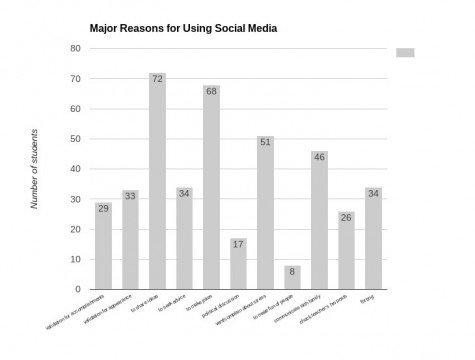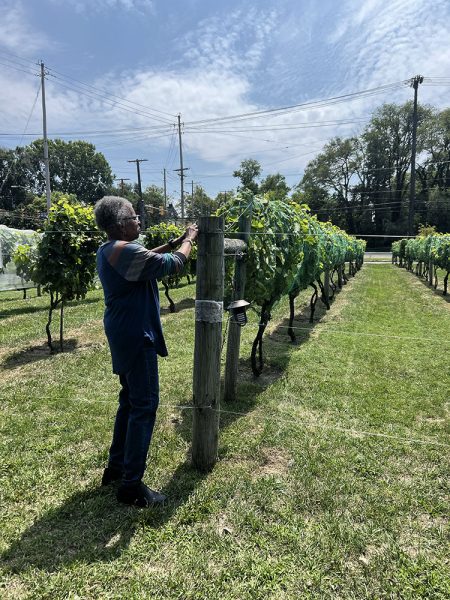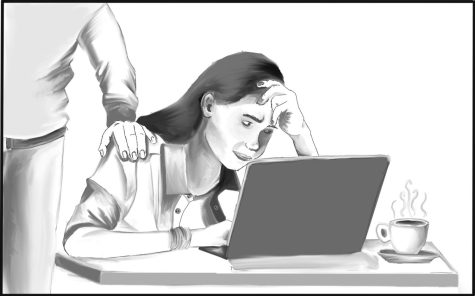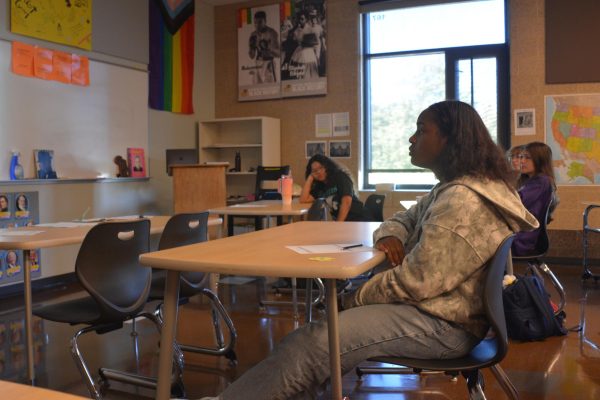We Asked BHS Students About Their Social Media Habits
Here’s What We Found

Beachcomber archives
It’s no secret that today’s teens live their lives online.
According to a 2015 Pew Research Center study by Amanda Lenhart, 92% of teens reported that they go online daily, and 24% said they are online “almost constantly.”
The Beachcomber conducted a survey of 113 BHS students, inquiring about their social media habits. The survey was given in English classes across grades 9-12. Questions focused on students’ frequency of use, reason for use, feelings about use and platform preference.
Our survey suggests that BHS students exceed the national averages for teens in social media use. Fifty percent of respondents said they are online “constantly”.
According to the survey, Snapchat is the social media app most commonly used by BHS students, with 95 students indicating regular use. Instagram came in second with 86 indicating regular use, 72 regularly using Twitter and 57 regularly using Facebook.
Freshmen Kai Samuels-Jackson said the primary reason she goes on these sites is to stay connected.
“People who are far away can be reached in seconds,” she said. “Before, you would have to send letters that were hard to keep up with, but now you can check on how friends from out of town are doing and still connect with them without all the formalities of a letter.”
Freshman Haleigh McPhillips also logs on to connect with people.
“[With social media,] I can allow others to see what I am up to and what I’ve been doing when they aren’t around me all the time,” McPhillips said. “I’m able to talk and interact with my friends that I don’t get to see on a daily basis.”
Although McPhillips said she thinks social media can be a great tool for connecting, she also pointed out the detriments of using such technology.
“Social media can either make or break someone’s life,” she said. “You could be on top of the world or at your worst. Cyberbullying occurs a lot on social media, and now, with the technology we have, suicide rates are up, due to cyberbullying.”
Cyberbullying can have chilling, real-life effects. In 2014, there were multiple cases of teens allegedly committing suicide, due to malicious messages on social media site Ask.fm.
According to the Pew study, 71% of teens use more than one form of social media. Freshmen Zoe Flate said this reflects her experience.
“There are so many different ways to share things. Why shouldn’t we use more than one?”
Freshman Heather Johnson said she has a different approach.
“I only use one type of social media,” Johnson said. “Keeping up with so many accounts just takes up too much time.”
McPhillips said she believes that social media is essential for some people to get the validation they need, and that’s why they might get upset when a post doesn’t get attention.
“A lot of people go on social media because they want to share something that means a lot to them, and if the post doesn’t get enough likes, it seems like no one cares about them [or] their interests,” McPhillips said.
This claim is supported by The Beachcomber’s social media survey, in which 26% and 29%, respectively, cited “validation for accomplishments” and “validation for appearance” as a major reason for using social media.
There also seems to be a gender difference in social media preferences.
Of the 56 females surveyed, 77% said they would rather use social media and 14% would rather play video games, the remainder not stating a preference. Of the 54 boys, 28% said they would rather use social media, while 61% would rather play video games, the remainder, again, not stating a preference.
In addition, when asked to rank how they felt when their social media posts didn’t get attention, 27% of girls said 0 out of 10, while 46% of boys replied the same.
On a scale of 1-10, BHS students, on average, ranked social media’s improvement of communication as a 7. However, Flate said she does not agree that it helps in that respect.
“Social media can be good for getting in touch every once and awhile, but it stops people from wanting to talk face to face,” she said.
Of survey respondents, 38 percent said they are rarely or never distracted by social media while doing their academic work; 62 percent said they are often or constantly distracted by social media.
Johnson said she feels that these distractions negatively impact schoolwork.
“Procrastination is a big problem I have, [and] many other students too,” she said. “Social media is just another distraction that [prevents] me from doing work and makes me procrastinate.”
Whether it’s seeking validation from other people, sharing ideas, making jokes or complaining about daily life, teens have a lot of reasons to log on.
According to the survey, going online to share and to complain about stress are some of the biggest reasons for BHS students.
Samuels-Jackson made it clear that while social media can be a place for many things, there is one significant motivation for teens to log on.
“They just need a place to communicate in the fast-paced society [we] live in,” she said. “Without social media, no one would be able to keep up with each other anymore.”













